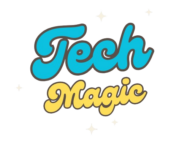YouTube is now a giant, woven into our daily lives for entertainment, learning, or passing time. Most of us turn to it without a second thought. However, it started as a simple idea that sparked a media revolution.
So, how did it go from being a simple video-sharing site to one of the most influential platforms on the planet? Let’s dive into its origin, key milestones, and how it’s changed the world.
1. YouTube’s Humble Start (2005)
In 2005, PayPal alumni Chad Hurley, Steve Chen, and Jawed Karim created YouTube to simplify video-sharing. At the time, uploading videos online was challenging, and there was no dedicated platform for it.
The first video ever uploaded was Jawed Karim’s “Me at the Zoo.” It was just a 19-second clip, but little did anyone know, it was the first step toward something that would transform the internet as we know it.
2. The Google Takeover (2006)
By 2006, the company was growing rapidly, gaining millions of users and uploads every day. That’s when Google stepped in. They bought YouTube for $1.65 billion, a bold move that gave the site the resources to expand at an even faster rate.
With Google’s backing, it went from a cool new platform to a digital empire.
3. YouTube’s Game-Changing Moments
2007: The YouTube Partner Program
In 2007, Company launched the Partner Program, which allowed creators to make money from ads on their videos. This was a huge milestone that turned it into more than just a place to upload funny clips. It allowed creators to make a living from their passion and sparked the rise of the creator economy. YouTube was no longer just a hobby—it became a career for millions.
2008: HD Video
In 2008, the company introduced high-definition video quality, making the platform more appealing to both creators and viewers. Better quality meant better content, and it encouraged even more creators to upload professional-grade videos.

2012: 1 Billion Views Per Day
By 2012, YouTube was a full-on digital powerhouse. The platform hit a massive milestone: 1 billion views per day. This proved that YouTube wasn’t just for viral videos anymore; it had become a global media platform for entertainment, education, and everything in between.
2015: YouTube Premium
As paid streaming services like Netflix grew in popularity, YouTube followed with its own subscription service—YouTube Premium (formerly YouTube Red). This gave users the option to watch ad-free videos, access exclusive content, and download videos for offline viewing. YouTube was officially joining the subscription model game.
2017: The Rise of YouTube Stars
By 2017, YouTube had become the launchpad for influencers. Creators like PewDiePie, Zoella, and Casey Neistat had millions of followers, and YouTube’s algorithm helped push content to wide audiences. YouTube was no longer just about watching videos—it was a place for creators to build global fanbases.
2020: YouTube as a Social Hub
By 2020, YouTube wasn’t just a place for videos—it was a full-fledged social platform. With features like live streaming, community posts, and direct engagement between creators and fans, YouTube became an interactive space where people could connect in real time.
The Global Impact of YouTube
The Creator Economy
One of YouTube’s most significant impacts has been the rise of the creator economy. Today, millions of people make a living from creating content on YouTube. Whether it’s gaming, beauty, vlogging, or educational videos, YouTube has made it possible for anyone with a camera and an idea to reach a global audience and build a career around their passion.
Redefining Media Consumption
YouTube has also disrupted traditional media. Instead of watching TV shows or news broadcasts, people now turn to YouTube for entertainment, information, and education. With millions of videos available at any time, YouTube has made on-demand content mainstream and changed the way we consume media.
Empowering Social Movements
Beyond entertainment, YouTube has become a platform for social change. Movements like Black Lives Matter, #MeToo, and many others have used YouTube to spread their messages to a global audience. YouTube has helped amplify voices that otherwise might have gone unheard and sparked important conversations around the world.
Connecting the World
YouTube has also connected people across the globe, making it easier than ever to share ideas, learn new things, and discover different cultures. It’s a place where creativity knows no borders, and it’s helped foster a sense of global community that didn’t exist before.
5. Challenges Along the Way
Of course, YouTube hasn’t been without its challenges. It’s faced criticism over content moderation, the spread of misinformation, and copyright issues. In response, Company has introduced new policies and tools to try to handle these issues. As the platform grows, finding the balance between freedom of expression and responsible content management remains an ongoing challenge.
Conclusion
YouTube has transformed content consumption, creation, and sharing since its humble beginnings. It has reshaped the digital landscape through the rise of the creator economy, its impact on entertainment, and its power as a tool for social change. As it evolves, YouTube will undoubtedly remain a driving force in our online experiences and interactions.
It go time?

